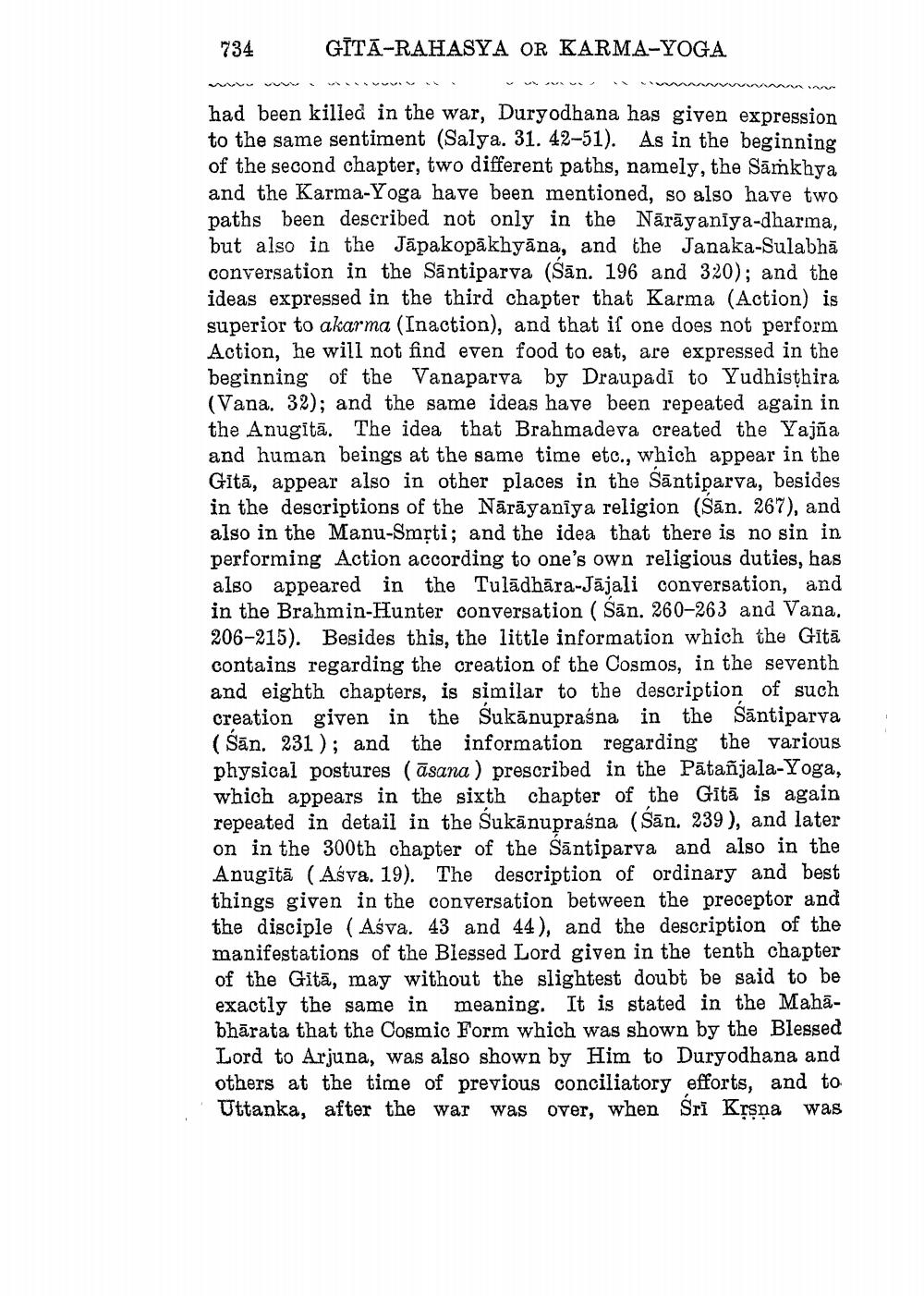________________
734
GĪTĀ-RAHASYA OR KARMA-YOGA
in var in
had been killed in the war, Duryodhana has given expression to the same sentiment (Salya. 31. 42-51). As in the beginning of the second chapter, two different paths, namely, the Samkhya and the Karma-Yoga have been mentioned, so also have two paths been described not only in the Narayaniya-dharma, but also in the Japakopakhyana, and the Janaka-Sulabha conversation in the Santiparva (San. 196 and 320); and the ideas expressed in the third chapter that Karma (Action) is superior to akarma (Inaction), and that if one does not perform Action, he will not find even food to eat, are expressed in the beginning of the Vanaparva by Draupadi to Yudhisthira (Vana. 32); and the same ideas have been repeated again in the Anugita. The idea that Brahmadeva created the Yajña and human beings at the same time etc., which appear in the Gita, appear also in other places in the Santiparva, besides in the descriptions of the Nārāyanîya religion (San. 267), and also in the Manu-Smrti; and the idea that there is no sin in performing Action according to one's own religious duties, has also appeared in the Tuladhara-Jajali conversation, and in the Brahmin-Hunter conversation (San. 260-263 and Vana. 206-215). Besides this, the little information which the Gita contains regarding the creation of the Cosmos, in the seventh and eighth chapters, is similar to the description of such creation given in the Sukanupraśna in the Santiparva (San. 231); and the information regarding the various physical postures (asana) prescribed in the Patañjala-Yoga, which appears in the sixth chapter of the Gita is again repeated in detail in the Sukanupraśna (San. 239), and later on in the 300th chapter of the Santiparva and also in the Anugītā (Asva. 19). The description of ordinary and best things given in the conversation between the preceptor and the disciple (Asva. 43 and 44), and the description of the manifestations of the Blessed Lord given in the tenth chapter of the Gita, may without the slightest doubt be said to be exactly the same in meaning. It is stated in the Mahabharata that the Cosmic Form which was shown by the Blessed Lord to Arjuna, was also shown by Him to Duryodhana and others at the time of previous conciliatory efforts, and to Uttanka, after the war was over, when Śri Krsna was




